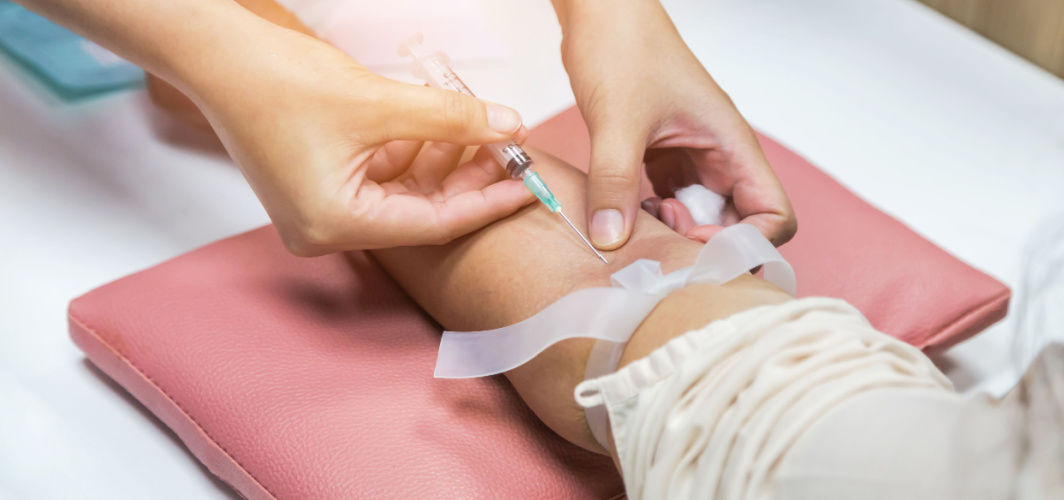General Health
Is Blood Cancer Curable Or Not?
10 min read
By Apollo 24|7, Published on - 29 September 2023
Share this article
0
0 like

Blood cancer, also known as haematological malignancy, refers to a group of cancers that affect the production and function of blood cells. It is a term used to describe several types of cancer, including leukaemia, lymphoma, and myeloma.
Is blood cancer curable or not? The answer is not straightforward because it depends on various factors, such as the specific type and stage of the cancer, as well as the individual's overall health. However, with advancements in medical research and treatment options, the prognosis for blood cancer patients has significantly improved over the years. In this blog, we will discuss about blood cancer, including its types, symptoms, treatment and prognosis to help make better-informed decisions.
What is Blood Cancer?
Blood cancer, also known as hematologic cancer, refers to cancers that affect the blood, bone marrow, and lymphatic system. These cancers primarily involve the production and function of blood cells, including red blood cells, white blood cells, and platelets.
1. Types of Blood Cancer
There are several types of blood cancer including:
- Leukaemia: Leukaemia is a type of blood cancer that primarily affects the bone marrow and blood. It is characterised by the rapid production of abnormal white blood cells. It is further divided into four types - Acute Lymphoblastic Leukemia, Acute Myeloid Leukemia, Chronic Lymphocytic Leukemia and Chronic Myeloid Leukemia.
- Lymphoma: Lymphoma is a blood cancer that affects the lymphatic system, particularly lymphocytes (white blood cells). There are two main categories of lymphoma which include Hodgkin Lymphoma and Non-Hodgkin Lymphoma.
- Multiple Myeloma: Multiple Myeloma is a blood cancer that affects plasma cells in the bone marrow. It is characterised by the overproduction of abnormal plasma cells, which can lead to bone damage and other complications.
2. Symptoms of Blood Cancer
Being aware of common symptoms associated with blood cancer is important.
- Unexplained Fatigue: Persistent and unexplained fatigue, often accompanied by weakness, can be an early sign.
- Frequent Infections: Blood cancers can weaken the immune system, leading to recurrent infections or illnesses.
- Unexplained Weight Loss: Significant and unintentional weight loss without changes in diet or exercise can be a concerning symptom.
- Enlarged Lymph Nodes: Swollen lymph nodes, especially if they are painless and do not resolve, may warrant investigation.
3. Causes and Risk Factors of Blood Cancer
Blood cancer, like many other cancers, can be influenced by a variety of causes and risk factors. Understanding these factors is essential for prevention and early detection.
- Genetic Predisposition: Some individuals may have a genetic predisposition to blood cancer, which means they inherit certain genetic mutations that increase their risk. Family history plays a significant role. If a close relative has had blood cancer, it may slightly elevate your risk.
- Exposure to Certain Chemicals or Radiation: Exposure to certain chemicals, such as benzene, or ionising radiation, like high doses of X-rays, can increase the risk of developing blood cancer. Occupational exposure to chemicals is a concern for some individuals, especially those working in industries involving hazardous materials.
- Immune System Disorders: Conditions that weaken or compromise the immune system, such as HIV/AIDS or certain autoimmune disorders, can increase the risk of blood cancer. In some cases, treatments used to suppress the immune system, like organ transplantation medications, can also be a risk factor.
Diagnosing Blood Cancer
Blood cancer is curable or not depends on various factors, but the first step in determining the appropriate course of action is through a thorough diagnostic process. Early diagnosis of blood cancer is essential for timely treatment and better outcomes.
Screening and Early Detection
Regular medical check-ups are crucial for early detection of blood cancer. Routine blood tests can help identify abnormalities, such as unusual cell counts or changes in blood cell characteristics, which may be indicative of blood cancer. For individuals at higher risk, such as those with a family history of blood cancer or known risk factors, more frequent monitoring may be recommended.
Diagnostic Procedures
Diagnosing blood cancer requires a combination of medical assessments and tests to accurately identify the type and stage of the disease. Some of the key diagnostic procedures include:
1. Complete Blood Count (CBC)
Complete Blood Count test is one of the initial tests used to evaluate blood disorders, including blood cancers. It measures various components of the blood, such as red blood cells, white blood cells, and platelets, as well as haemoglobin and hematocrit levels.
Abnormalities in these blood cell counts, such as low red blood cells (anaemia), low platelets (thrombocytopenia), or abnormal white blood cell counts, can provide important clues about the presence of blood cancer.
2. Bone Marrow Biopsy and Aspiration
A bone marrow biopsy and aspiration involve the removal of a small sample of bone marrow tissue and fluid from the hipbone (pelvic bone) or another suitable site to check for abnormal cell growth, changes in cell morphology, and genetic or chromosomal abnormalities. These procedures are often necessary to confirm the diagnosis and determine its type as well as find out if blood cancer is curable or not.
3. Imaging tests
Imaging tests are essential to assess the extent and spread of blood cancer and to detect any involvement of lymph nodes or internal organs. Common imaging modalities include:
- Computed Tomography (CT) scans
- Magnetic Resonance Imaging (MRI)
- Positron Emission Tomography (PET) scans
CT scans provide detailed cross-sectional images of the body, while MRI scans use magnetic fields and radio waves to create detailed images of soft tissues. PET scans use a small amount of radioactive material to detect metabolic activity in cells.
Treatment Options for Blood Cancer
In this section, we will delve into some treatment options for blood cancer.
1. Chemotherapy
Chemotherapy involves the use of powerful drugs to target and kill cancer cells or to slow their growth and spread.
Chemotherapy drugs can be administered in different ways, including intravenously (IV), orally in pill form, or through injections. These drugs work by interfering with the ability of cancer cells to divide and multiply. They can target fast-growing cells, which is why they are effective against cancer cells.
Common side effects of chemotherapy include:
- Nausea and vomiting are common side effects of chemotherapy.
- Chemotherapy can lead to fatigue, which can be overwhelming.
- Some chemotherapy drugs can cause hair loss.
- Chemotherapy-induced peripheral neuropathy can cause numbness, tingling, and pain in the hands and feet.
2. Radiation Therapy
Radiation therapy, also known as radiotherapy, plays a significant role in the treatment of blood cancer. It uses high-energy radiation beams to target and destroy cancer cells or inhibit their growth. Radiation therapy is often employed as part of a comprehensive treatment plan for blood cancers, particularly when cancer cells are localised in specific areas or when chemotherapy alone may not be sufficient.
There are two main types of radiation therapy used in blood cancer treatment:
- External Beam Radiation Therapy (EBRT): EBRT is the most common form of radiation therapy. It delivers high-energy radiation from an external machine (linear accelerator) directly to the tumour. It is administered in multiple sessions over a specified treatment period.
- Internal Radiation Therapy (Brachytherapy): It involves placing a radioactive source directly inside or very close to the tumour. This allows for a highly targeted and concentrated dose of radiation.
3. Stem Cell Transplantation
Stem cell transplantation, also known as hematopoietic stem cell transplantation (HSCT), is a treatment option for blood cancer that involves the infusion of healthy blood-forming stem cells into a patient's bloodstream.
The process begins with the collection of stem cells, which can be obtained from the patient themselves (autologous transplant) or from a donor (allogeneic transplant). Before the transplant, patients often undergo conditioning therapy, which may involve high-dose chemotherapy or radiation to destroy cancer cells and suppress the immune system.
The collected stem cells are then infused into the patient's bloodstream through a catheter, similar to a blood transfusion. These stem cells migrate to the bone marrow and begin producing healthy blood cells.
4. Targeted Therapy and Immunotherapy
Targeted therapy and immunotherapy are innovative approaches to treating blood cancer that focus on specific molecules or mechanisms involved in cancer growth and immune response regulation. Unlike traditional chemotherapy, which affects both healthy and cancerous cells, targeted therapy aims to selectively target cancer cells while sparing normal cells. Immunotherapy harnesses the body's immune system to recognise and destroy cancer cells.
Several targeted therapies have been developed for different types of blood cancer. Here are a few examples:
- Imatinib (Gleevec): Imatinib is a targeted therapy used to treat chronic myeloid leukaemia (CML) and gastrointestinal stromal tumours (GISTs). It inhibits specific proteins that drive the growth of cancer cells.
- Rituximab (Rituxan): Rituximab is an antibody-based targeted therapy used to treat non-Hodgkin lymphoma and some types of leukaemia.
- Ibrutinib (Imbruvica): Ibrutinib is used to treat chronic lymphocytic leukaemia (CLL) and certain types of non-Hodgkin lymphoma. It blocks signalling pathways involved in cancer cell growth.
Immunotherapy has shown promise in the treatment of various blood cancers. Some common approaches include:
- Checkpoint Inhibitors: Checkpoint inhibitors, such as pembrolizumab and nivolumab, are used to treat certain types of Hodgkin lymphoma and non-Hodgkin lymphoma. They block proteins that inhibit the immune system, allowing it to recognise and attack cancer cells.
- Chimeric Antigen Receptor (CAR) T-cell Therapy: CAR-T cell therapy involves modifying a patient's T cells to express a receptor that targets a specific protein in cancer cells.
Care and Support for Blood Cancer Patients
In this section, we will delve into some care and support strategies for blood cancer patients.
1. Managing Side Effects and Symptoms
Some strategies to manage side effects include:
- Nausea and Vomiting Management: Doctors can prescribe antiemetic medications to prevent or alleviate nausea and vomiting. These medications work by blocking signals in the brain that trigger these symptoms.
- Pain Management Strategies: Pain management strategies include medications, physical therapy, and alternative therapies like acupuncture or mindfulness techniques. Doctors may prescribe opioids or other pain-relieving medications based on the type and severity of pain.
- Psychological Support: A cancer diagnosis and treatment journey can be emotionally challenging. Psychologists, counsellors, and support groups can provide emotional support and coping strategies.
2. Nutritional Guidelines for Blood Cancer Patients
A proper diet can help support the body's immune system, provide energy, and aid in recovery. Some foods to boost the immune system include:
- Fruits and Vegetables: A diet rich in fruits and vegetables provides essential vitamins, minerals, and antioxidants that can support the immune system. Brightly coloured produce like berries, citrus fruits, spinach, and carrots are excellent choices.
- Lean Proteins: Lean sources of protein, such as poultry, fish, tofu, and legumes, are essential for tissue repair and immune function. Protein can help rebuild cells and promote healing.
- Whole Grains: Whole grains like brown rice, quinoa, and whole wheat bread are rich in fibre and provide a steady source of energy. They can help combat fatigue, a common side effect of cancer treatment.
3. Lifestyle Modifications for Better Quality of Life
Some lifestyle modifications that can improve quality of life are:
- Regular Exercise: Engaging in regular exercise and physical activity can offer numerous benefits for blood cancer patients. It can help improve strength, endurance, and overall well-being.
- Stress Management Techniques: Effective stress management techniques can improve the quality of life for blood cancer patients. Stress management strategies may include mindfulness, meditation, breathing exercises, and support groups.
Prognosis of Cancer
Factors that may affect the prognosis of cancer are:
- Stage and Type of Blood Cancer: Blood cancers are categorised into different stages based on the extent of the disease's spread. Early-stage blood cancers typically have a better prognosis than those diagnosed at advanced stages.
- Age: Younger patients, especially those without significant comorbidities, tend to have better outcomes as they can often tolerate more intensive treatments. Older adults or individuals with preexisting health conditions may face challenges in receiving aggressive treatments, and this can impact their prognosis.
Conclusion
While blood cancer may not always be curable, advancements in medical research and treatment options have significantly improved outcomes for patients. It is crucial to understand that each case is unique and requires personalised care. Early detection, timely intervention, and adherence to treatment plans are essential for managing blood cancer effectively. Regular check-ups and open communication with healthcare professionals can help individuals navigate their journey with blood cancer more confidently.
General Health
Consult Top Oncologists
View AllFrequently Asked Questions
Is blood cancer always fatal, or are there curable types?
Is blood cancer always fatal, or are there curable types?
Can blood cancer be prevented through genetic testing?
Can blood cancer be prevented through genetic testing?
What is the role of palliative care in blood cancer management?
What is the role of palliative care in blood cancer management?
Can lifestyle modifications make a difference in blood cancer outcomes?
Can lifestyle modifications make a difference in blood cancer outcomes?
How is blood cancer diagnosed, and what are the key diagnostic tests involved?
How is blood cancer diagnosed, and what are the key diagnostic tests involved?
Leave Comment
Recommended for you

General Health
Vitamin B12 Test: Uses, Normal Range, Deficiency
A vitamin B12 blood test helps diagnose the deficiency of the nutrient, monitor treatment effectiveness to get the right level of the nutrient and prevent complications. Learn about the procedure, interpretation of results, and when to consider testing vitamin B12 levels for optimal health.

General Health
Medications To Treat Conjunctivitis
Discover effective medications to treat conjunctivitis (pink eye). Find relief for red, itchy, and irritated eyes. Get expert advice and options.

General Health
Kidney Failure: Symptoms, Cause, Diagnosis, Treatment, Prevention
Kidney failure may be caused by factors like chronic kidney disease, acute kidney injury, genetic predisposition, and more. The symptoms include loss of appetite, fatigue, swelling in the legs, etc. It can be treated through lifestyle changes and medications.
Subscribe
Sign up for our free Health Library Daily Newsletter
Get doctor-approved health tips, news, and more.
Visual Stories

Plant-based Foods That Are a Great Source of Iron
Tap to continue exploring
Recommended for you

General Health
Vitamin B12 Test: Uses, Normal Range, Deficiency
A vitamin B12 blood test helps diagnose the deficiency of the nutrient, monitor treatment effectiveness to get the right level of the nutrient and prevent complications. Learn about the procedure, interpretation of results, and when to consider testing vitamin B12 levels for optimal health.

General Health
Medications To Treat Conjunctivitis
Discover effective medications to treat conjunctivitis (pink eye). Find relief for red, itchy, and irritated eyes. Get expert advice and options.

General Health
Kidney Failure: Symptoms, Cause, Diagnosis, Treatment, Prevention
Kidney failure may be caused by factors like chronic kidney disease, acute kidney injury, genetic predisposition, and more. The symptoms include loss of appetite, fatigue, swelling in the legs, etc. It can be treated through lifestyle changes and medications.